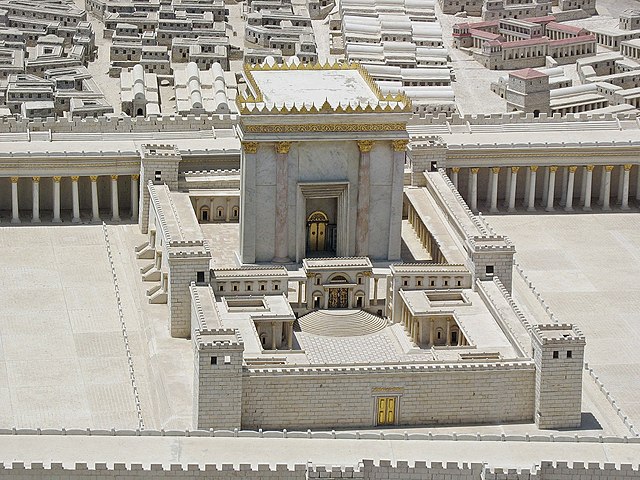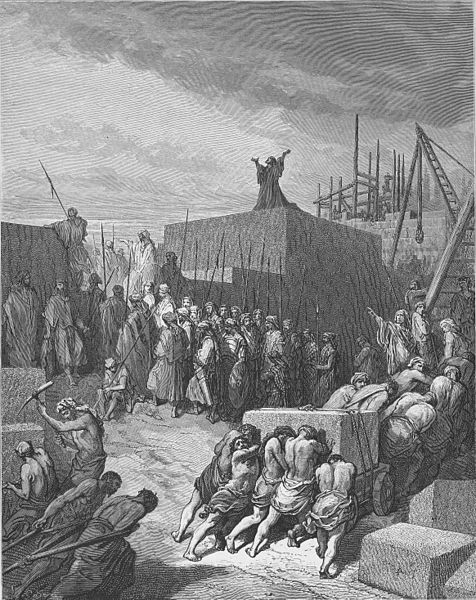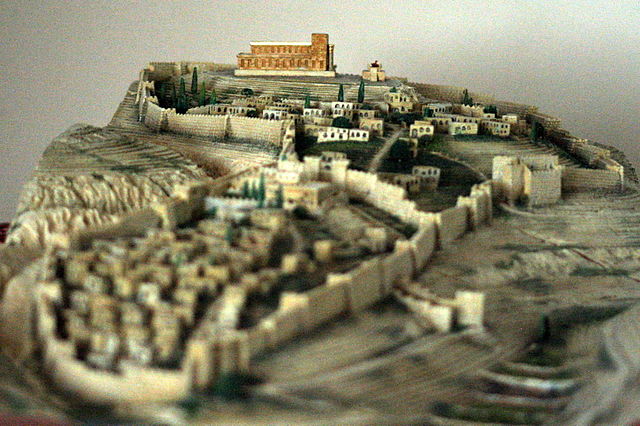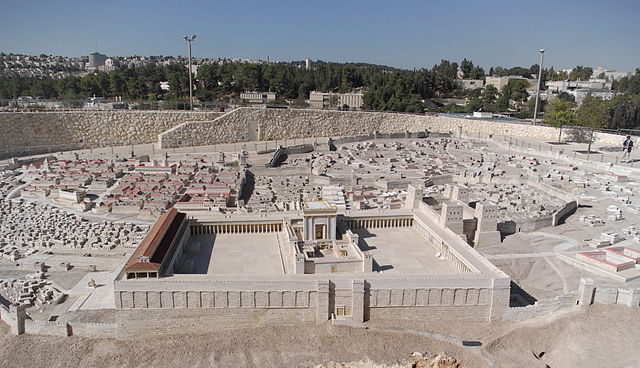Haggai or Aggeus was a Hebrew prophet during the building of the Second Temple in Jerusalem, and one of the twelve minor prophets in the Hebrew Bible and the author of the Book of Haggai. He is known for his prophecy in 520 BCE, commanding the Jews to rebuild the Temple. He was the first of three post-exile prophets from the Neo-Babylonian Exile of the House of Judah, who belonged to the period of Jewish history which began after the return from captivity in Babylon. His name means "my holidays."
Russian icon of Haggai, 18th century (Iconostasis of Kizhi monastery, Karelia, Russia).
Haggai (watercolor circa 1896–1902 by James Tissot)
The Second Temple, later known as Herod's Temple, was the reconstructed Temple in Jerusalem between c. 516 BCE and 70 CE. Defining the Second Temple period, it stood as a pivotal symbol of Jewish identity and was central to Second Temple Judaism; it was the chief place of worship, ritual sacrifice (korban), and communal gathering for Jews. As such, it attracted Jewish pilgrims from distant lands during the Three Pilgrimage Festivals: Passover, Shavuot, and Sukkot.
Model of Herod's Temple (inspired by the writings of Josephus) displayed within the Holyland Model of Jerusalem at the Israel Museum
Rebuilding of the Temple (illustration by Gustave Doré from the 1866 La Sainte Bible)
Modern-day reconstruction of Jerusalem during the 10th century BCE, showing Solomon's Temple, which was on the site prior to the building of the Second Temple.
Herod's Temple as imagined in the Holyland Model of Jerusalem; east at the bottom






